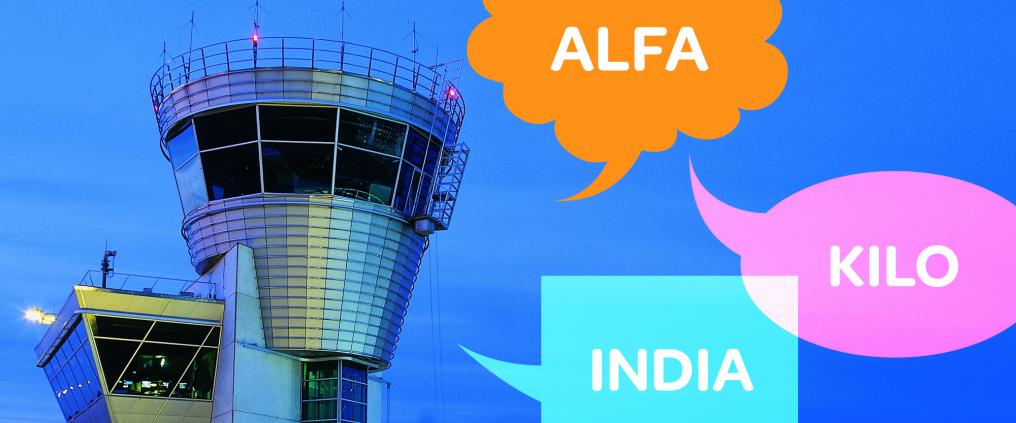'Alfa charlie niner' – pardon, what did you just say? Conversations between the air traffic control and aeroplanes might sound incomprehensible to a layman, but for air traffic controllers and pilots around the world they are clear and familiar.
Air traffic control and pilots use a special alphabet in all communications. A is Alfa, b is Bravo, c is Charlie, d is Delta, e is Echo, f is Foxtrot, g is Golf, h is Hotel, i is India, j is Juliet, k is Kilo, l is Lima, and so forth.
'The abbreviation “OH”, for example, is read out as “Oscar – Hotel”, using the words that correspond to the letters', explains Antti Ruhanen, Chief Instructor for Avia College. Finavia's Avia College provides training for new air traffic controllers and refresher training for working air traffic controllers in Finland.
'Air traffic controllers refer to aeroplanes by their call signs, formed by a combination of letters and numbers. Each airline applies for their own call sign from the International Civil Aviation Organization, ICAO, and private aeroplanes normally use their registration numbers as call signs.
The purpose of this wording is to make communication as clear as possible and thus increase safety for all.
Cleared to land or cleared for landing?
The phraseology or wording now used internationally came about after WW2, in the 1950s, when commercial aviation grew more popular. At the time, ICAO tested various words to find the best ones to match with each letter of the alphabet, and then went on to create this phraseology.
The aim is to ensure that pilots are able to understand messages from the air traffic control wherever in the world they are flying. The alphabet of this 'language' is also used by NATO and in sea transport.
This phraseology and English are the languages of international aviation. In Finland, however, air traffic control uses both Finnish and English in addition to the phraseology.
'The directions are expressed in Finnish as 'vasempaan' (to the left) to differentiate it from 'oikealle' (to the right). In English, landing is expressed by 'cleared to land' and departure as 'cleared for take-off. 'These agreed wordings often don't follow grammar and may thus sound odd', continues Ruhanen.
There are also precise rules for conveying numeric information in radio communications.
'The numbers five and nine are easily confused in English, and for this reason nine is pronounced as 'niner'. Likewise, the rules clearly state in which situations we have to say 'one zero zero' and when 'hundred' instead, for example'.
Clarity always comes first
Air traffic controllers must be well versed in the rules of the phraseology. They learn to use it during training sessions in the simulator.
A uniform and strictly regulated language prevents errors and misunderstandings.
'Nothing in the conversation between air traffic control and pilots should be based on assumptions; mutual understanding is always paramount. For this reason, the air traffic controller issues orders to the pilot, after which the pilot repeats what he or she heard. This ensures that the instructions are understood correctly.
Situational awareness is a crucial area in air traffic controller training, as this work requires continuous attentiveness and discipline.
'Air traffic control phraseology is a great invention, and even surgeons have come to us to learn about it. In the hospital setting, the same type of communication based on previously agreed precise rules could be used between doctors and nurses to avoid misunderstandings', Ruhanen concludes.



